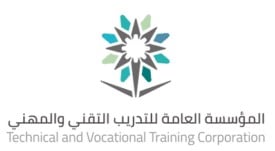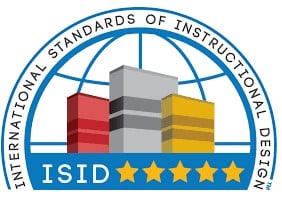Training bag: Medical Records Management Course
It is a training bag aimed at qualifying for the management of medical records and the introduction of the medical records course within medical units and hospitals
How they are managed and controlled, the importance of statistical information, the evaluation of the performance of treatment units and the application of quality to the management of medical records and what models and documents are used in hospitals and treatment units.
Detailed objectives of the training bag
- Identify the main duties of managing medical records, implementing procedures and instructions of the Ministry of Health and seeing them develop work in primary health care centers.
- Understand the uses of multiple medical/health records and the special nature of the data within medical/health records.
- Identify the patient and implement the registration procedures by making a health card for review for the patient as well as for the family.
- Determine how integrated medical records are filled out and according to the quality and importance of the register under the guidelines and instructions issued in this regard.
A detailed overview of a training bag: Medical Records Management Course
Medical records are a written set of information concerning the patient’s health care and necessary for the continuity of care in the present and future.
The information contained in medical records is also used in management and planning for the development and improvement of services in primary health-care facilities and an important source of information in medical research as well as an important source of statistics required in the field of health care.
Doctors, nurses and other healthcare workers can use and refer to information for the purpose of identifying the patient’s priorities.
One of the priorities of medical records workers is to ensure that medical records in health care are available and maintained to continue to provide information about the patient on his subsequent visits to health-care facilities.
Lack of information increases the patient’s suffering due to the lack of previous information, which can be vital for continuous care. In addition, the lack or lack of medical records renders the medical records system incomplete and does not perform the purpose for which it was properly developed and therefore confidence in the work of health care is affected.
What are you going to learn?
- Modern regulations of medical units.
- Functional organizations of the workforce of the Department of Medical Services and Records.
- The role of training and medical education in how to prepare medical records.
- Medical records and their importance in clinics and medical units.
- Planning and control in workplace health services.
- Providing statistical information and its relationships to evaluate the performance of therapeutic units.
- Social care and its importance within health units.
- Problems and difficulties that limit the efficiency of the provision of health and social service.
- The role of quality in the management of medical records.
- Forms and documents used in medical records.
- Practical applications and models.
What are the procedures for reviewing the medical record?
- Open the file and unscrew the papers and arrange them according to the hospital’s policy in arranging the medical file forms.
- Make sure that the medical record contains all medical forms approved by the hospital.
- Ensure that the medical record contains special forms that call for the patient’s condition and presence without a special request from the attending physician.
- Rearrange the models within the cover of the medical register in a manner contrary to the system arranged in the section and in a way that enables the patient to track the patient’s condition from the time of admission to the time of his or her sensory discharge the hospital policy to arrange medical forms within the medical file.
- Remove all unused forms before saving the file.
- Make sure that the data in the medical register is filled out by the authorized persons correctly and in a clear line.
- Make sure you use approved shortcuts and don’t use personal shortcuts when blogging.
- Ensure that all written information is signed by people authorized to write down data. Keep in mind the write-down of the open name and seal.
- Update missing social and administrative information.
- Bring in the shortcoming forms and then write down the missing information.
- If there is more than one person responsible for the shortfall, a separate deficiency model is filled out for each person.
- Save the form on the cover of the medical file from the inside.
- Bring your doctor’s card to incomplete models and write down the information on this form.
- Save missing files in the place for the preservation of missing files and in the temporary preservation area.
- Incomplete medical records that need to be completed in a temporary location are kept within the medical records section in a private locker.
- To facilitate access to the incomplete medical register, an Out Card is placed in the permanent preservation area indicating that the register is in the unfinished records area.
- When your doctor completes the medical record, The imperfection model is eliminated.
- Once completed, medical records are transferred to permanent preservation cabinets.
- A specified period is set after the initial notification for the doctor concerned to complete the medical records.
- If the doctor does not complete the medical records during this period, the competent officer informs the head of the medical records department of the names of the retarded doctors, to issue a written note to each of them.
- If the doctors concerned do not respond within the specified period, The hospital administration is informed of the names of the retarded doctors to take action against them.
Target groups
The Medical Records Management Course is a training bag for:
Department staff in health care facilities.

™IMAS
ضمن مفاهيم تصميم الأنظمة المنهجية في التدريب، تأتي مصفوفة IMAS كأداة من أدوات صناعة التدريب المعاصرة، والتي تتعامل مع آلية تجميع عناصر الحقيبة التدريبية في شكل متكامل ومتماسك لضمان توافق هذه العناصر مع تحقيق أهداف التدريب ورفع كفاءة الأداء مشارك ومدرب ومنظم. إنه يمكّن المطور من تطوير سيناريو تدريب احترافي مدروس جيدًا وإدارة وقت الجلسة التدريبية. يمكن للجلسة معالجة أي موضوع.

المؤسسة العامة للتدريب التقني والمهني
صممت منهجية خاصة بالجودة الداخلية في الوحدات التدريبية التابعة لها، حيث تشمل على خمسة معايير رئيسية، تتضمن الإدارة والقيادة، والمدربين، والخدمات المقدمة للمتدربين، والمناهج، وبيئة التدريب، وذلك بهدف تطوير جودة التدريب المقدم في المنشآت التدريبية لمواكبة حاجة سوق العمل المحلي.

™ISID
يعد أول برنامج من نوعه في تقييم وتصنيف الحقائب التدريبية ويهدف إلى أن يكون مرجعاً مهماً للشركات والمؤسسات لضمان جودة التدريب المقدم لكوادرها من أجل تطوير الأداء وتطويره وتحسينه. إن جعل هذه المعايير دولية ليس فقط لأنها منتشرة في أكثر من قارة واحدة ومئات البلدان والمنظمات، ولكن أيضًا لأنها متوافقة مع العديد. تقنيات أسترالية ويابانية وكندية وأمريكية.

![]()










Be the first to review “Training bag: Medical Records Management Course”
You must be logged in to post a review.